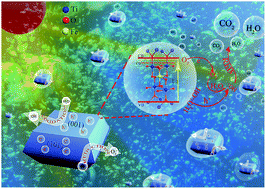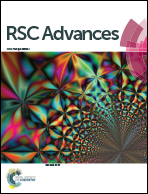A facile synthesis of Zn-doped TiO2 nanoparticles with highly exposed (001) facets for enhanced photocatalytic performance
Abstract
It is a great challenge to simultaneously improve the visible light absorption capacity and enhance photon-generated carrier separation efficiency of photocatalysts. Herein, Zn-doped TiO2 nanoparticles with high exposure of the (001) crystal face were prepared via a one-step hydrothermal decomposition method. A detailed analysis reveals that the electronic structures were modulated by Zn doping; thus, the responsive wavelength was extended to 600 nm, which effectively improved the visible light absorption of TiO2. More importantly, the surface heterojunction of TiO2 was created because of the co-existing specific facets of (101) and (001). Therefore, the surface separation efficiency of photogenerated electron and hole pairs was greatly enhanced. So, the optimal TiO2 photocatalyst exhibited excellent photocatalytic activity, in which the Rhodamine B (RhB) degradation efficiency was 98.7% in 60 min, under the irradiation of visible light. This study is expected to provide guidance for the rational design of TiO2 photocatalysts.



 Please wait while we load your content...
Please wait while we load your content...